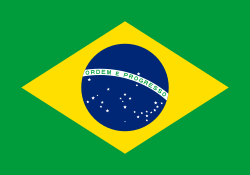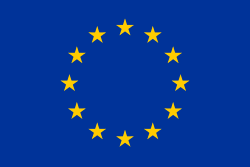Australiens Grand Prix 1999
| Datum | 7 mars 1999 |
|---|---|
| Bana | Albert Park Circuit |
| Sträcka | 57 × 5,303 = 302,271 km |
| Vinnare | Eddie Irvine, Ferrari |
| Pole position | Mika Häkkinen, McLaren-Mercedes |
| Snabbaste varv | Michael Schumacher, Ferrari, 1:32,112 |
Australiens Grand Prix 1999 var det första av 16 lopp ingående i formel 1-VM 1999.
Rapport
Överraskande var att de tre tippade toppförarna blev utan poäng i säsongspremiären efter tekniska problem vilket gav en sensationell prispall med Eddie Irvine, som tog sin första F1-seger, Heinz-Harald Frentzen och Ralf Schumacher.
Resultat
- Eddie Irvine, Ferrari, 10 poäng
- Heinz-Harald Frentzen, Jordan-Mugen Honda, 6
- Ralf Schumacher, Williams-Supertec, 4
- Giancarlo Fisichella, Benetton-Playlife, 3
- Rubens Barrichello, Stewart-Ford, 2
- Pedro de la Rosa, Arrows, 1
- Toranosuke Takagi, Arrows
- Michael Schumacher, Ferrari
Förare som bröt loppet
- Ricardo Zonta, BAR-Supertec (varv 48, växellåda)
- Luca Badoer, Minardi-Ford (42, växellåda)
- Alexander Wurz, Benetton-Playlife (28, upphängning)
- Pedro Diniz, Sauber-Petronas (27, transmission)
- Marc Gené, Minardi-Ford (25, kollision)
- Jarno Trulli, Prost-Peugeot (25, kollision)
- Olivier Panis, Prost-Peugeot (23, hjul)
- Mika Häkkinen, McLaren-Mercedes (21, gasspjäll)
- Alessandro Zanardi, Williams-Supertec (20, snurrade av)
- David Coulthard, McLaren-Mercedes (13, hydraulik)
- Jacques Villeneuve, BAR-Supertec (13, trasig vinge)
- Damon Hill, Jordan-Mugen Honda (0, kollision)
- Jean Alesi, Sauber-Petronas (0, växellåda)
- Johnny Herbert, Stewart-Ford (0, brand)
Noteringar
- British American Racing och motortillverkaren Supertec gjorde F1-debut.
- Pedro de la Rosa, Marc Gené och Ricardo Zonta gjorde F1-debut.
- Eddie Irvines första F1-vinst.
VM-ställning
Förarmästerskapet
| Konstruktörsmästerskapet
|
Källor
- ”1999 Formula 1 Australian Grand Prix” (på engelska). Formula1.com. https://www.formula1.com/en/results.html/1999/races/687/australia/race-result.html. Läst 29 april 2015.
| ||||||||
Media som används på denna webbplats
The civil ensign and flag of Belgium. It is identical to Image:Flag of Belgium.svg except that it has a 2:3 ratio, instead of 13:15.
The Flag of Europe is the flag and emblem of the European Union (EU) and Council of Europe (CoE). It consists of a circle of 12 golden (yellow) stars on a blue background. It was created in 1955 by the CoE and adopted by the EU, then the European Communities, in the 1980s.
The CoE and EU are distinct in membership and nature. The CoE is a 47-member international organisation dealing with human rights and rule of law, while the EU is a quasi-federal union of 27 states focused on economic integration and political cooperation. Today, the flag is mostly associated with the latter.
It was the intention of the CoE that the flag should come to represent Europe as a whole, and since its adoption the membership of the CoE covers nearly the entire continent. This is why the EU adopted the same flag. The flag has been used to represent Europe in sporting events and as a pro-democracy banner outside the Union.














